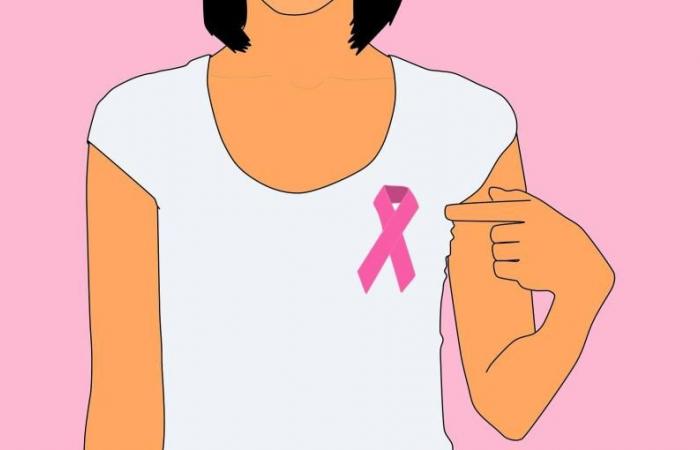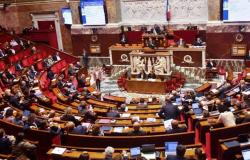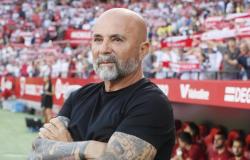If fatigue has become one of the emblematic feelings of our modern societies, the fatigue experienced by people with cancer seems to be of another nature. The symptom most reported by patients, often underestimated in treatment, this unusual fatigue can become a real burden.
It constituted the starting point for doctoral research in Sciences and Techniques of Physical and Sports Activities (STAPS) supported in 2024.
Fatigue that affects quality of life
Cancer-related fatigue is a complex phenomenon that escapes, in part, medical rationalization. Specialists emphasize the subjective and multidimensional nature of this symptom in its own right, and underline the non-proportionality of its intensity with regard to the effort made.
Unlike “good” fatigue which announces restful sleep, cancer-related fatigue persists despite rest and considerably affects the quality of life of patients. These difficulties in participating normally in daily life can continue for years after the treatment protocol and, in most cases, give rise to misunderstandings with the healthy, including caregivers.
Although fatigue is omnipresent in the path of patients, its consideration remains insufficient, by the medical profession as well as by their loved ones. However, solutions exist, including adapted physical activity (APA).
The benefits of adapted physical activity against cancer
Currently, regular physical activity appears to be one of the most effective ways to moderate the adverse effects of the disease and its treatments, primarily cancer-related fatigue. As counterintuitive as this statement may be, reports carried out by the National Cancer Institute in 2017 then by Inserm in 2019 have in fact concluded that there is a therapeutic need to offer sessions of physical activity adapted to patients as early as possible. possible.
Priority given by teachers in adapted physical activity (EAPA), from one of the STAPS sectors, these sessions aim in particular to fight against sarcopenia – that is to say a progressive and generalized decline in muscle mass . Far from falling only within the domain of caresarcopenia is recognized as an independent prognostic factor. In other words, a person with cancer can die from a lack of muscle even though the tumor is medically controlled.
In addition to improving the body’s tolerance to treatments, regular practice combining muscle strengthening exercises and endurance efforts reduces the risk of recurrence for certain cancers.
APA, now prescribed as supportive oncological care
To quote Prue Cormie, an Australian researcher specializing in this area:
“If we had a pill called exercise, it would be demanded by cancer patients, prescribed by all cancer specialists and subsidized by the government.”
In practice, although APA is now recognized as supportive oncological care, its adoption remains limited. Willpower is not enough for these patients, who complain precisely of being too tired!
This phenomenon was particularly salient in the stories of 25 women with breast cancer interviewed as part of our investigation.
The analysis of the discourses, however, invites us to combine this feeling in the plural, according to the stages of the illness. Understanding the various tones of fatigue more precisely makes it possible to consider more targeted therapeutic proposals, particularly through adapted physical activity.
The allegory of the seasons to account for variations in fatigue
In order to account for the variations in fatigue throughout the different stages of the disease, we used the allegory of the seasons. Three seasons could thus be identified:
- Autumn, symbolizing the period of announcement, represents a time of intense upheaval during which the person learns their new “job as a patient” (a sociological expression used during the research) at a frantic pace; The result is fatigue associated with cognitive saturation.
If the objective of physically “preparing” the person for future treatments is essential, individual sessions are to be favored during the first weeks in the sense that they allow the refocusing on oneself necessary to deal with relational disturbances.
- Winter represents, in our analyses, the period of acute treatments: it evokes the rigor of the undesirable effects of chemotherapy, radiotherapy, and the inherent tendency towards the isolation of patients due to irrepressible fatigue, described in the terms of gravity.
During this “season”, it seems relevant this time to favor collective physical activity sessions and between peers during which the individual can create, in proximity with others like him, a cognitive and emotional resonance.
- Spring finally represents the ambivalence of the situation of people in remission. Invited to return to the outside world to resume a “normal” life, they are nevertheless confronted with the persistence of undesirable effects and the prospect of recurrence. Here, the residual fatigue from cancer treatments intertwines with the fatigue of “being yourself again” (this expression being a nod to Tired of being yourself d’Alain Ehrenberg).
The need then arises to offer mixed practice times where former patients and healthy people coexist, and thus support the transition to post-cancer life.
Unspeakable, the risk is great that the burden of cancer-related fatigue remains invisible. Its recognition, through systems such as the APA, then becomes a crucial issue throughout the seasons not only for the physical well-being, but also for the mental and social well-being of patients.
Recognize your fatigue socially
The fight against “physical” fatigue constitutes the azimuth of these sessions. However, the analysis of the comments reminds us that fatigue, like pain, exposes the limits of language when it comes to communicating one’s experience to others and suggests, in fact, considering the conditions of its enunciation as well as its reception.
Many of the respondents highlighted the impossibility of making their fatigue heard by the healthy, revealing how cohabitation with other patients is particularly precious, during and after treatment. Peer-to-peer activities such as APA sessions, among others, create favorable conditions for social sharing of fatigue, sparking a form of authentic solidarity.
Taking note of the difficulties of these women in re-inscribing their experience in a universe of shared meaning, even though fatigue is a recurring motif in daily interactions, this work will also have been an opportunity to reflect on the consequences of the phatic function. fatigue.
As psycho-sociologist Philippe Zawieja has shown, it took a real shift for fatigue to become phatic, in other words: a subject about which it is possible to talk without risk, stripped of all significant information. Just like trivialities about the weather or the “Hello” of a phone call, mentioning fatigue serves as a ritual to initiate our conversations: “Not too tired? »
Addressed to people dealing with an illness like cancer, this question may seem equally trivial. On the contrary, it contributes to the euphemization of the specific fatigue experienced by an ever-increasing population, torn between the concern to correspond to the model of the resilient patient, and that of seeing their fatigue recognized.
This article is republished from The Conversation under a Creative Commons license. Read the original article.






